One thing I have discovered about writing on human hearts--whether through parenting or teaching in higher education--is that you wish to impart those things which you believe most enduring and important. For example, over all things in this life I long for our children to love the Lord Jesus Christ deeply and to have a whole-hearted commitment to Him. Similarly, I also want to impart to them wholesome experiences which focuses their attention on beauty in God's creation. Such beauty is a foreshadow of Christ's kingdom in the age to come.
I suppose one can take several different paths in parenting in order to accomplish this second objective, but the one that makes most sense to me is what was handed down to me by my own mother--a homesteading and farming way of life. Interestingly, she received this same heritage growing up on her parents' 120+ acre farm in upstate New York--a heritage passed down in turn to her father by his own father. All the qualities I love and admire about my mother--her endurance as a widow with three young children, her love and sensitivity to others, and her work ethic, etc. can be traced back in part to her development in this heritage.
Building ponds and raising animals is one of the current chapters I am writing in the lives of these young ones with which my wife and I are entrusted. These are living letters which will never go out of print and, God willing, will be passed on to the next generation long after we are gone.
* * * * * * * * * * * * * * * * * * * * * * * * * * * * * * * * * * * * * * *
Pond #3 Construction Pictures
Ever since I started the first pond, I had in mind precisely where the second one would go--right across the driveway, which I can later excavate away and replace with a bridge. However, the idea for a third pond developed a bit later as I would mow and reflect on the layout of the property. Higher up in our acreage there are some trees in a small and shallow gully area. It always seemed to shout out to me as the perfect place to locate a shaded pond with an island. Moreover, this location is perfect for using the pond as a watering source for goats, chickens, and particularly our ducks, as it is right near the current stable and, God-willing, future location of a full size barn.
The occasion for breaking ground was actually precipitated by the need for strips of grass sod on the second pond's dam. So I took the laser level, shot my lines, and spray-painted and flagged the various water levels. This would be the area from within which I would harvest my grass sod. This layout job was a little trickier than most, since it was my goal to leave all trees intact, close to the water, but not so close as to bring about premature death. I probably reshot with the laser three different configurations before I finally found what I was looking for in this third pond.
The pics which follow pick up on the process after I have already harvested the grass sod and had started to excavate the key trench for the clay core dam. But I think you will get the general idea from what follows.
This pond construction sequence begins with . . . you guessed it, piles of dirt. I did not think to take any pics prior to stripping the grass sod away, as I was simply focused on getting the second pond's dam protected with a grass cover. Oh well:

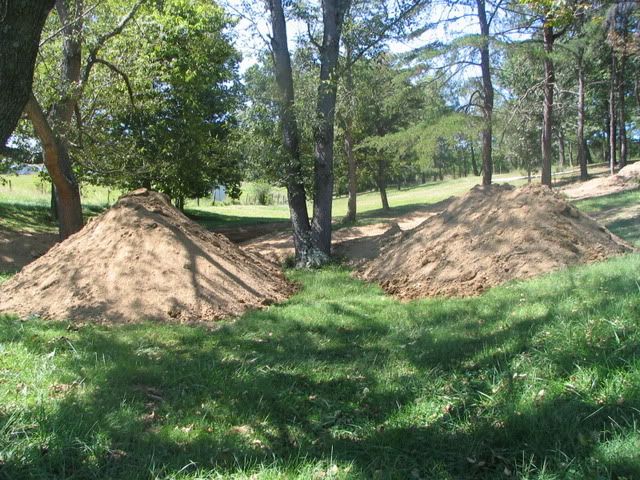
At the deeper pool end of the pond is the core trench. If you recall from the previous pond construction sequences on this blog (particularly pond #1), to have a successful pond one cannot simply pile dirt up for a dam. You need to excavate down to either hardpan clay, or as in the case of our region, Weikert shale. This core serves two basic purposes: first it locks the dam structure in place much like a keyway. Second, as it is backfilled with moist clay and compacted down, it forms a watertight barrier to water. Obviously the goal of a pond is to hold water, and a clay core is a central aspect of having a successful water-retaining pond:

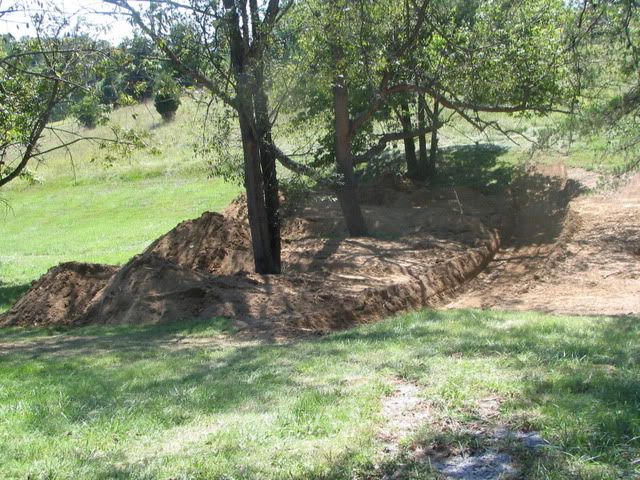
The core trench can actually get quite deep, as this sequence of pics demonstrate. I actually had to go down ca. 10-12 ft. before I hit the clay for which I was looking. In the past I have used both backhoes and bulldozers to excavate core trenches. Without question the best machine for the job is an excavator, but when on a very tight budget you use what you have--it just takes much longer:

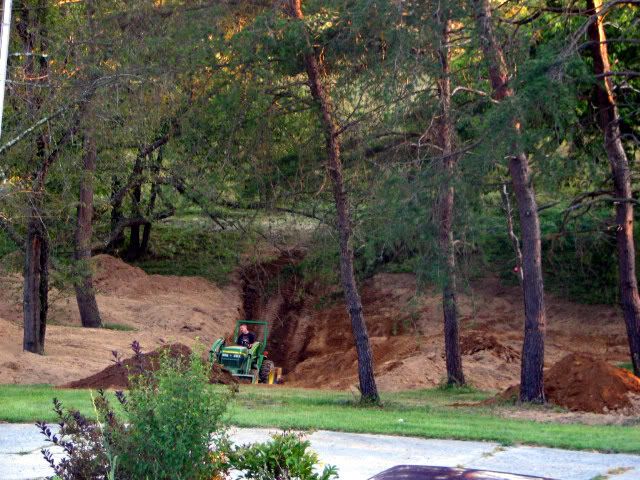
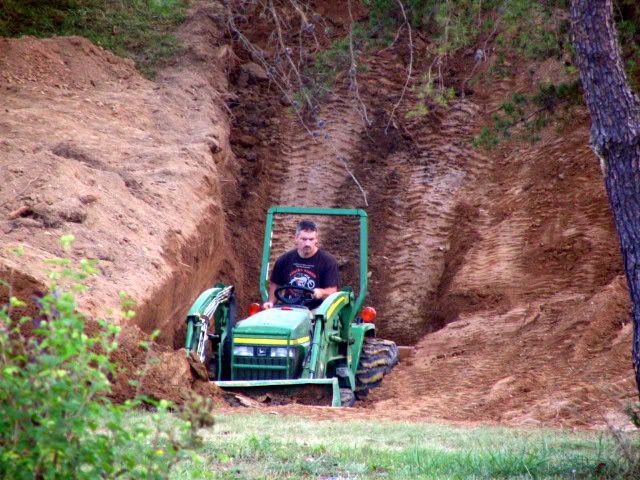
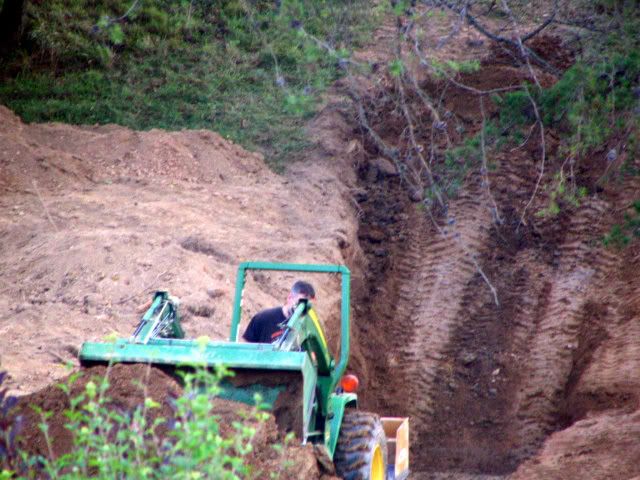
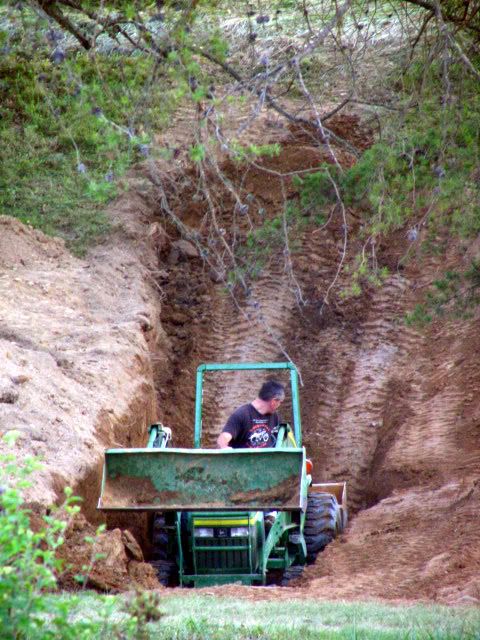
As you can imagine, if all the good clay is 10-12 ft. down, it is going to pose quite a challenge in getting to it in order to backfill the core trench. My approach was as follows: I would use the boxblade to drag away the silt and other materials which hundreds of years of erosion had deposited in this swale. This necessitated pulling it away from the trench and pushing it into huge piles in the center and sides of the pond basin. When good clay material emerged, I would scoop it out and deposit in the core trench in lifts about a foot deep. I would then run the tractor back and forth across the entire area of the dam until it was all firmly compacted. Whenever there was insufficient moisture in the clay to aid in compaction, one of my sons would stand off to the side and spray the whole area down with a hose. It worked beautifully! By the time we got around to taking a picture of it, I had already backfilled and compacted the dam almost to its original ground level:

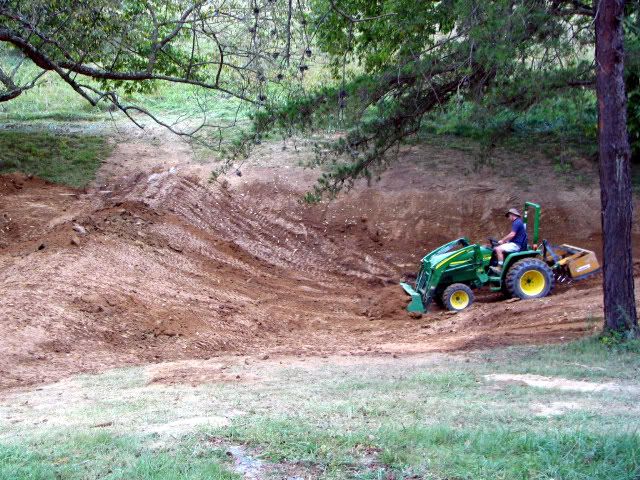
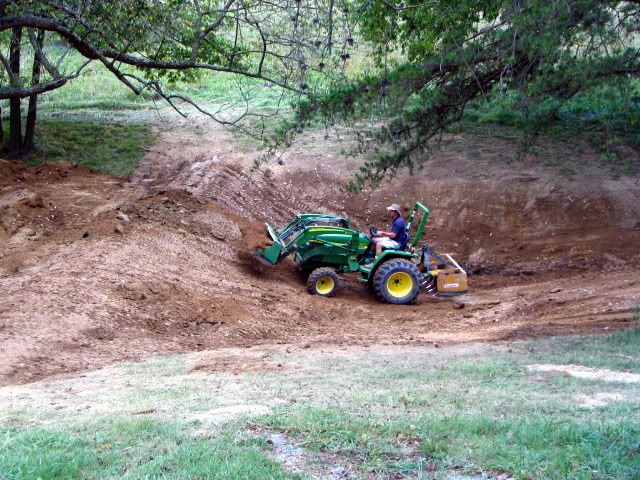

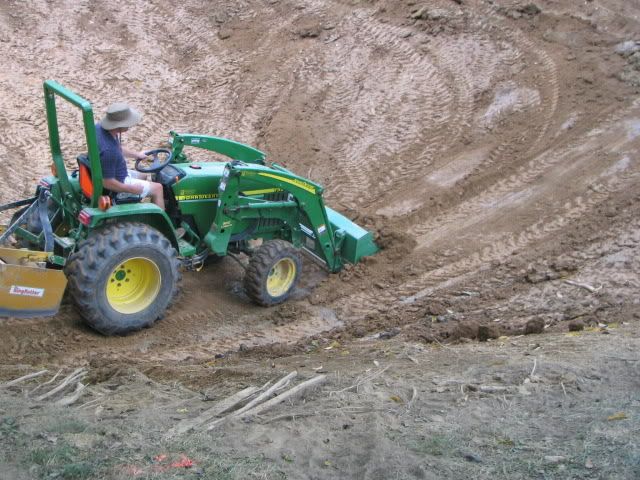
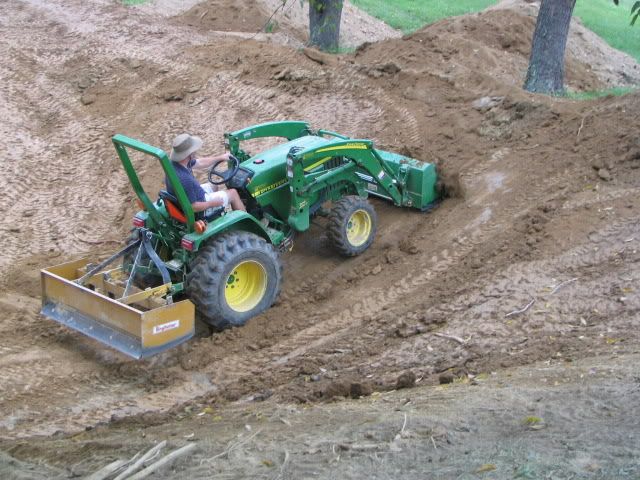
Now came the precise question of the island in the middle. There just happened to be a spot where a tree was located, and while the tree had obvious signs of disease and woodpecker damage, it was still alive. The average tree on an island this close to water would likely die anyway, so this would do fine. When it dies, I will simply fell it and plant something like a river maple or weeping willow in its place. Working around the island and sculting it within the bounds of the basin did prove to be something of a challenge:

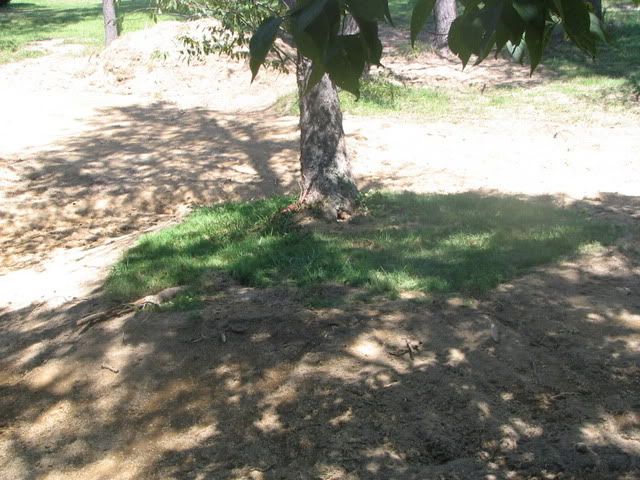
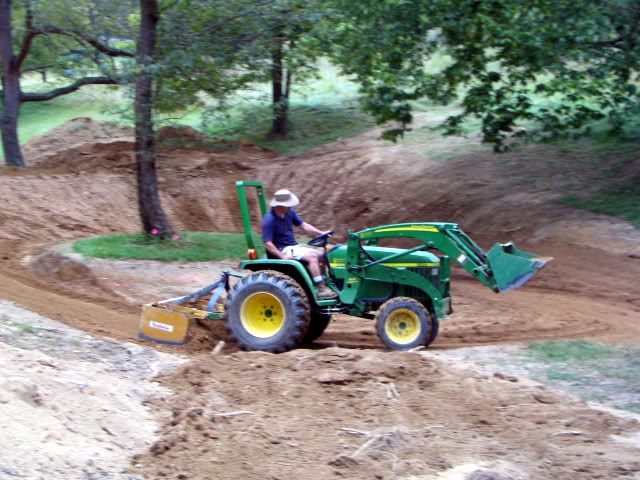
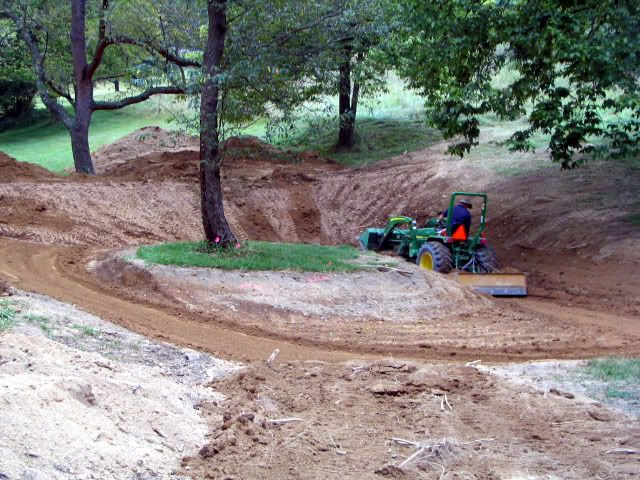

Just as everything was going well, two structural engineers showed up unannounced to inspect the process and converse among themselves. Although I knew everything was sound, I was nevertheless a bit nervous:

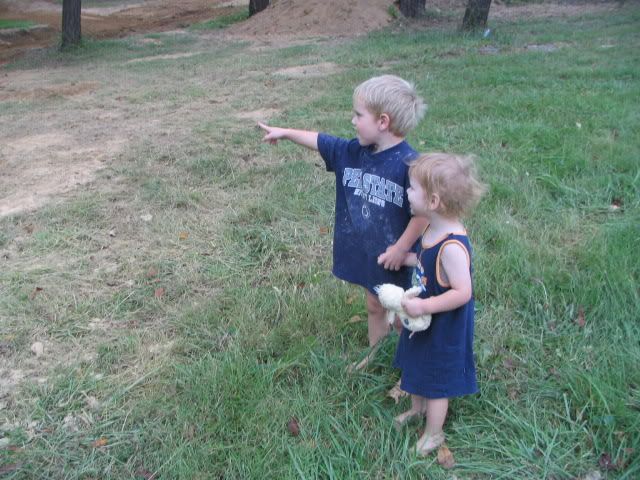

Although there was posturing and attempts to mark out their territory, in the end they had no substantive complaints and went on about their business. I had the feeling though that I had not seen the last of them. But for my part I just stayed focused on my work:
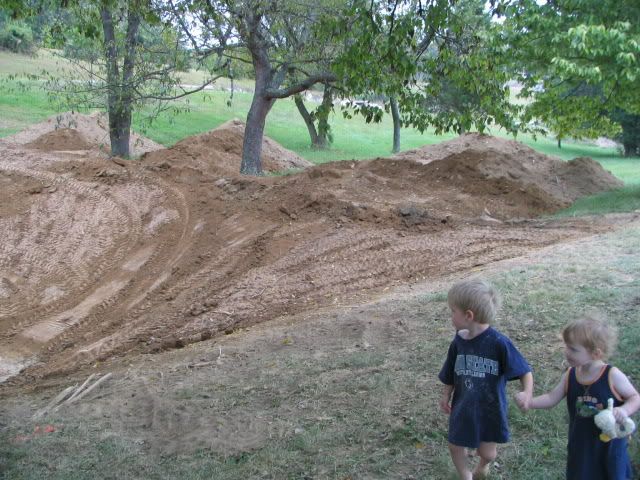
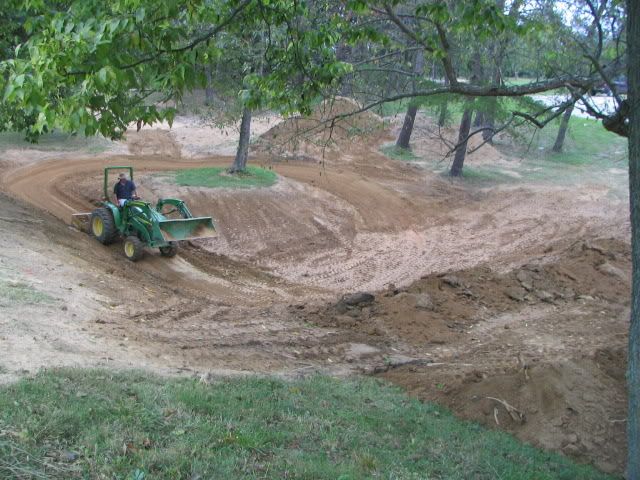
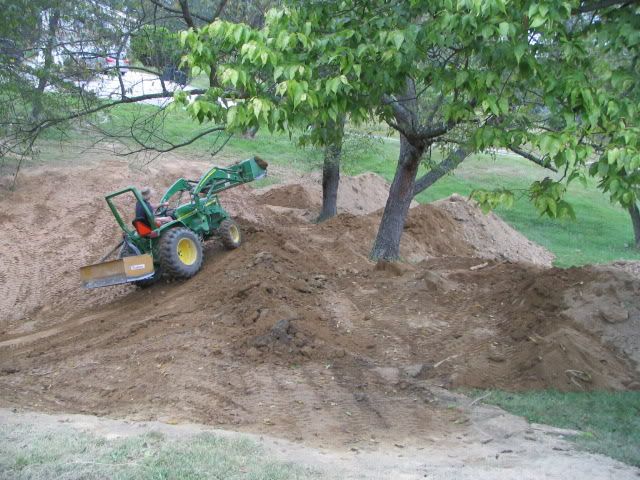
The job was now a matter of sculpting around the island and removing the top burden down to the clay so that I could compact it around the entire pond basin, thus forming a water barrier. I was also aware that I was in a not-so-subtle race against the clock, since rain could potentially fill what I had already excavated, forcing me to rent a generator and pump as I had to with the second pond twice. That is expensive and no fun, so I put my head down and put in some long hours:
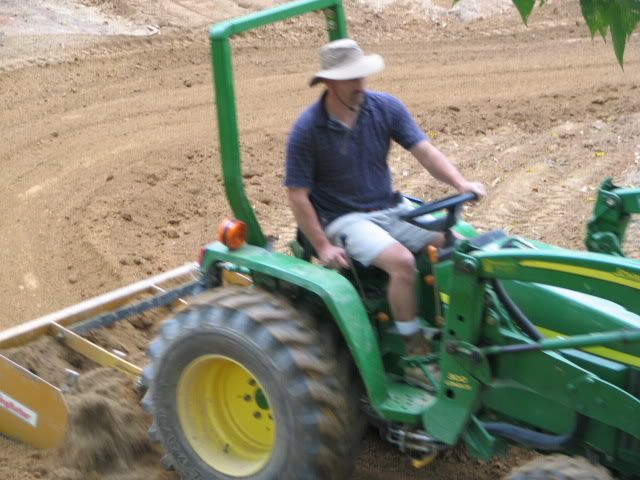
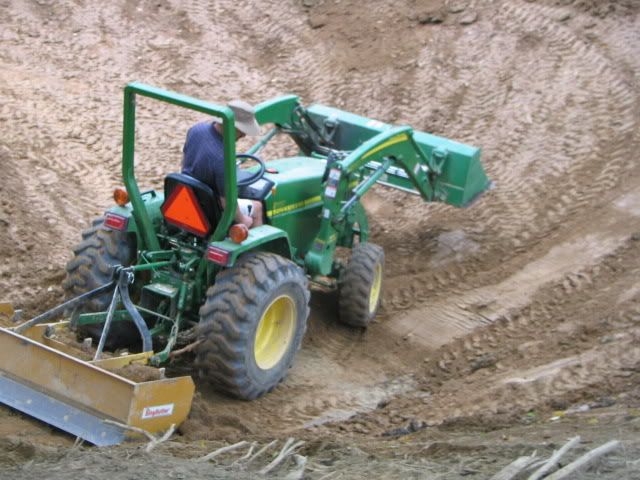
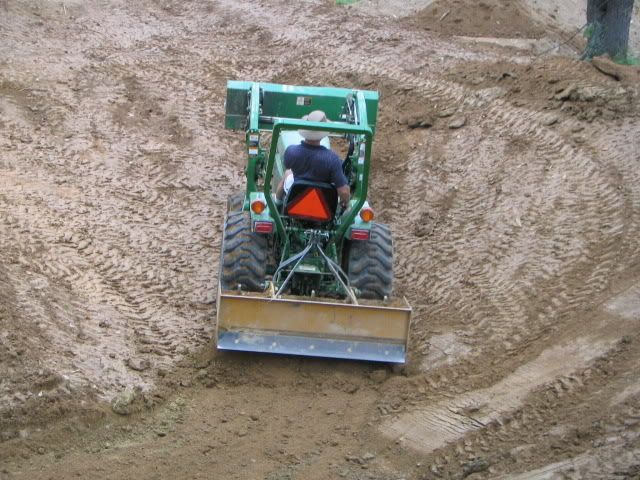
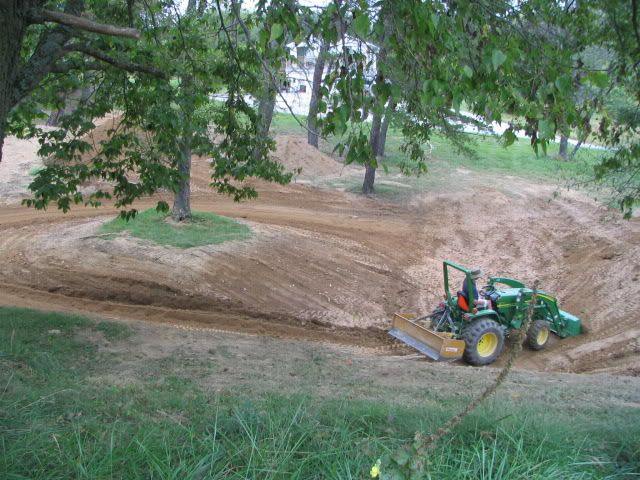
The pond was now really begin to take shape, and I was reminded once again that for all our planning and design, we are ultimately at the mercy of where the soil, clay, and shale are located. In other words, to some degree you have to "discover" where the pond is at and how deep it is going to be. In that way, it is something of an art. One surprise along these lines for me was the final water depth. I had no idea that I would end up with a pond that would be 12-14 ft. deep at full pool (though it tapers back to a shallower end):
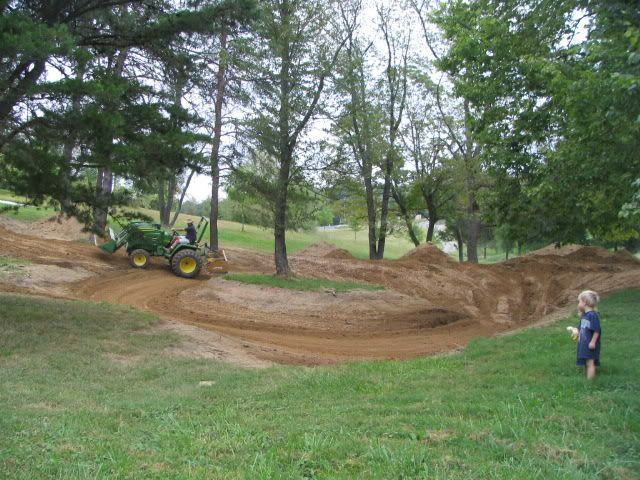
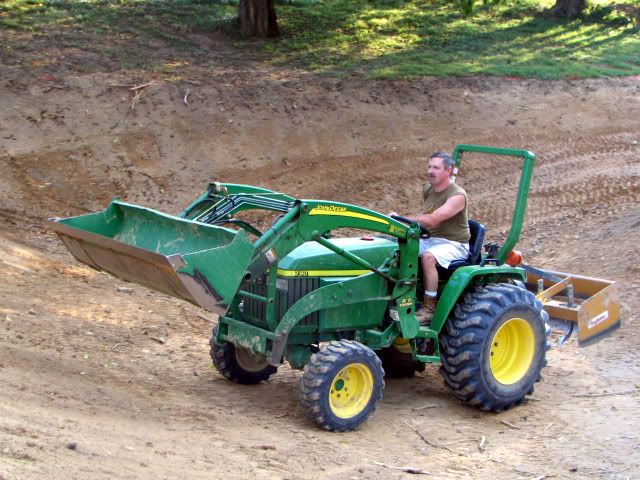
At this point I thought it wise to set up the laser again and recheck my work, and I am glad I did. While the dam and the sides were spot on, my readings indicated that most of my island would be submerged at full pool! That would not do, so after using some marker paint to provide layout, I went to my topsoil pile and brought in dirt with which to build the island up as needed. It was a bit of a trick getting the tractor up on that island (due to height) to smooth things out, but I managed. I will have to replant grass on it, but that is not a problem since it is all rich topsoil:

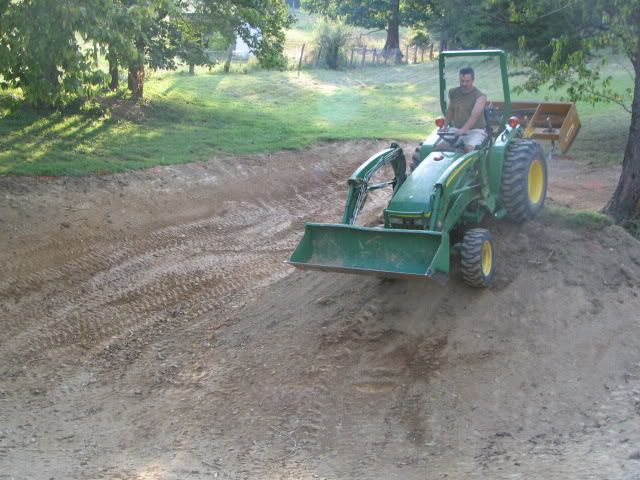
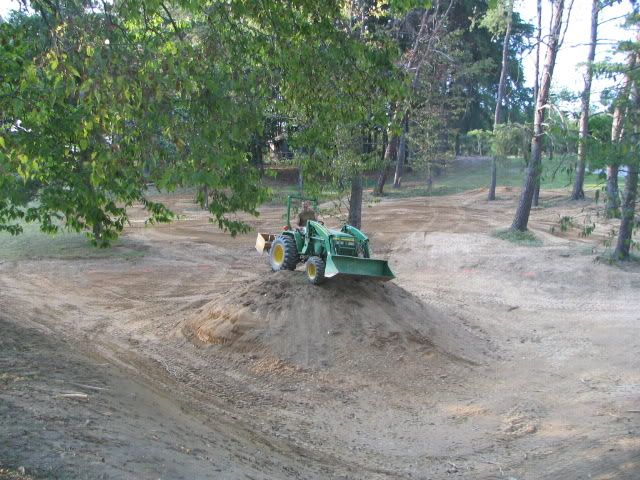
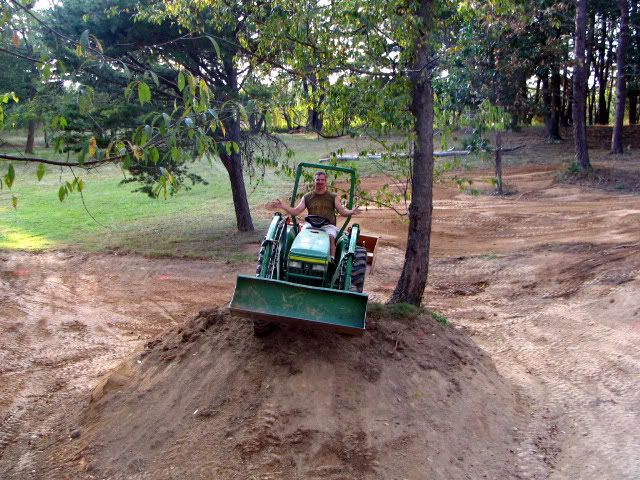
Now for the finishing touches and last bit of work throughout:
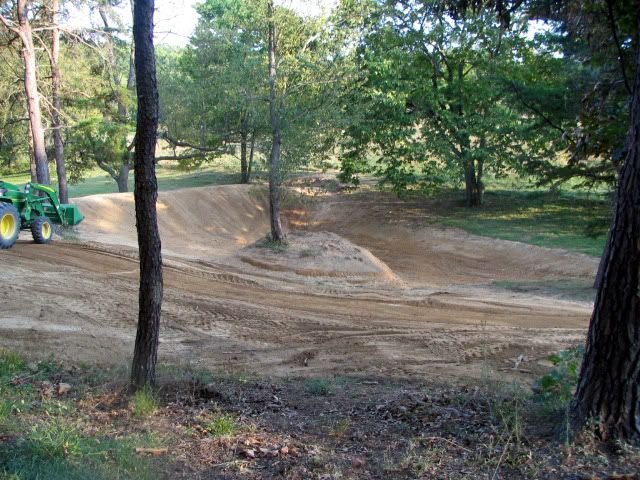
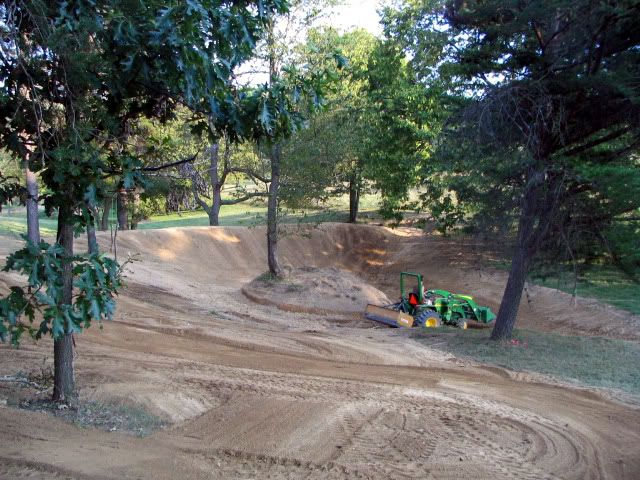
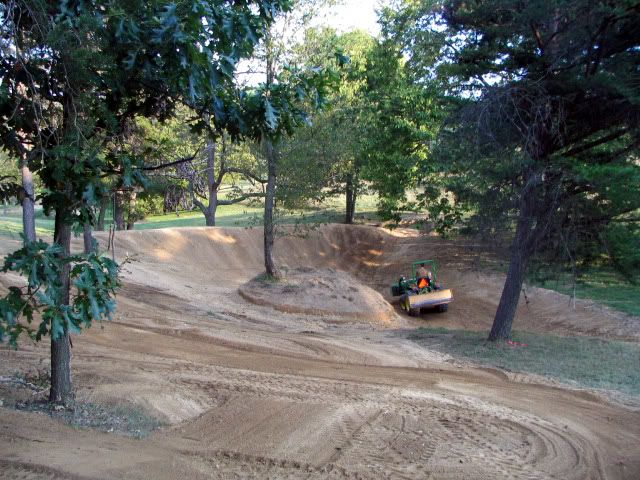
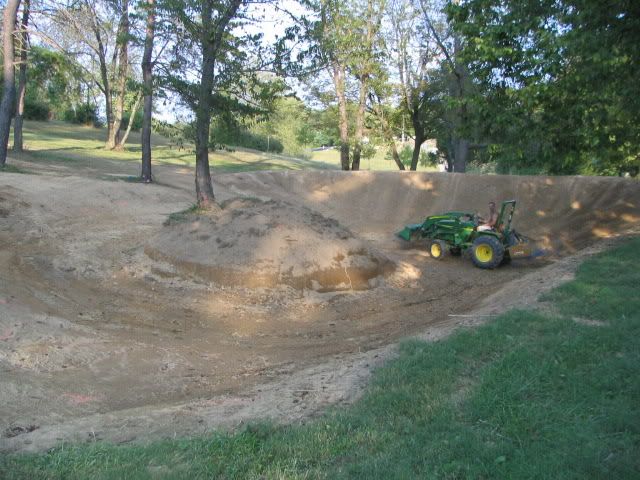
I carved out overflows on each side of the dam (into the hillside), and smoothed out all the surrounding area which will be grass around the pond (that portion of land had been marked by depressions, holes, etc.). The last thing to do is plant some grass, mulch it with straw (my sinuses hate that part), and then wait for the winter rains to come and fill the pond:
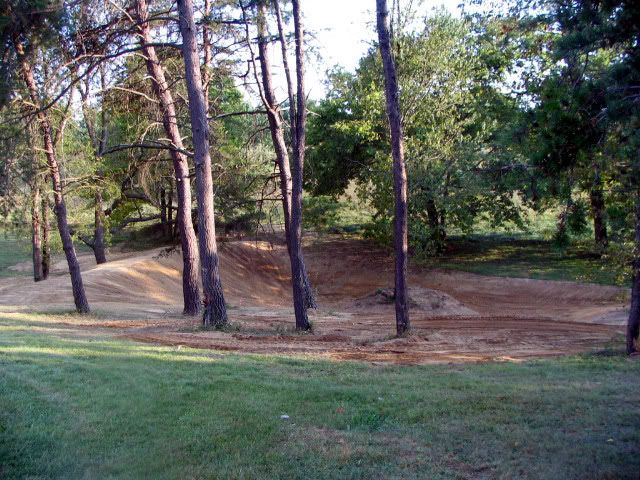
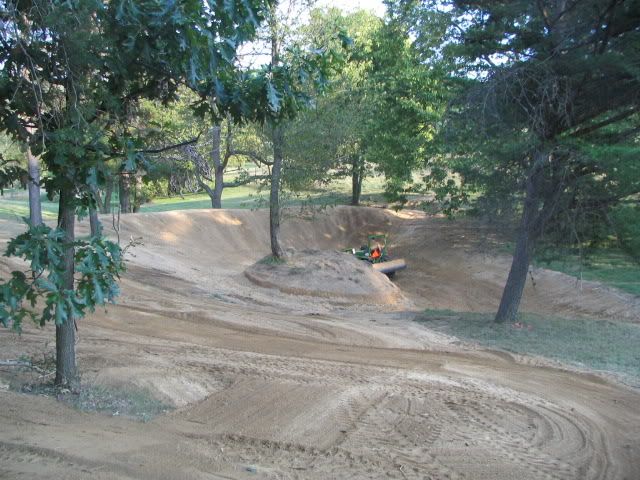
All in all I am exceptionally pleased with the outcome. The ducks will love the pond (especially the island), and I will fence it off for the goats as well. It is very picturesque and peaceful among all the trees, so I will likely put a nice bench on which to sit and contemplate. The water level will allow me even to stock it with some fish.
I suppose the final picture should be of my trusty 790 4x4 John Deere tractor, which is as nimble as it is powerful. I am thankful to God for the blessing of having it.
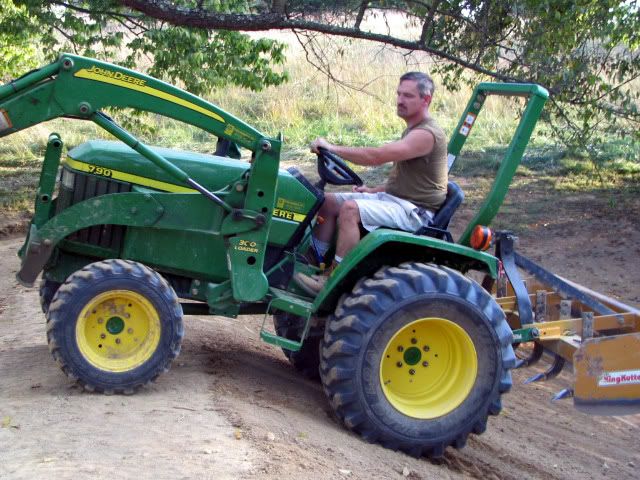
1 comment:
How long did this latest pond take you? I hope the rain holds off until you are ready for it. We have been deluged in NE GA but I'm sure it is in the national news. Mom V
Post a Comment